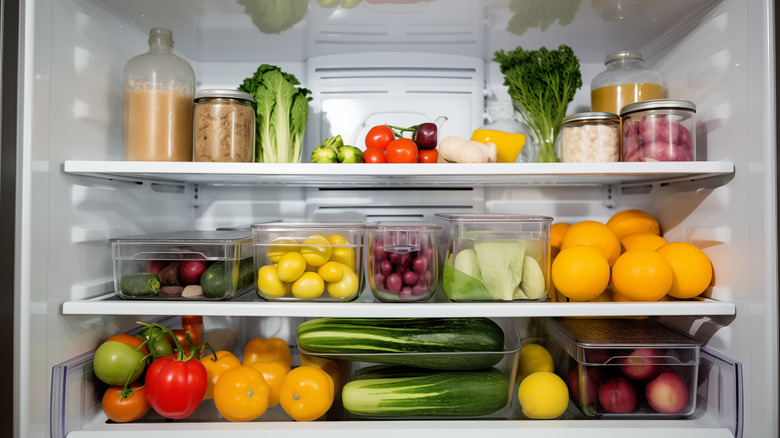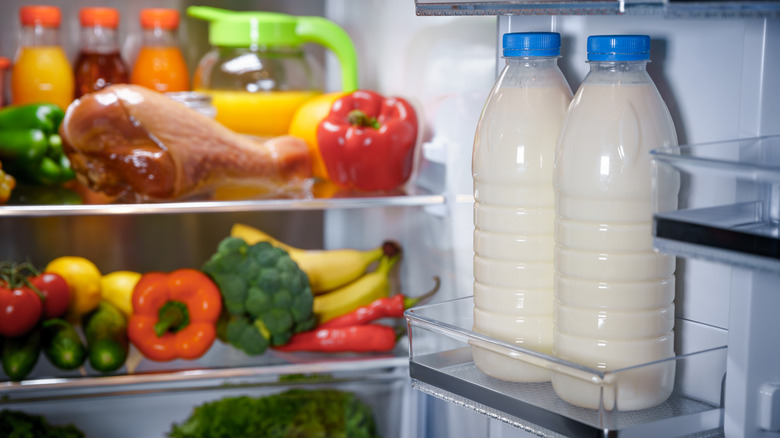Here's Where Tall Items Should Always Be Placed In Your Fridge
Proper refrigerator organization is key to avoiding food waste. Storing items of all sizes haphazardly is one of the many mistakes people make with their fridges. To optimize space, keep tall items at the back — where they can still be easily seen. Not only will this help visually, preventing you from feeling overwhelmed and confused each time you open the doors, but it will create a harmony of storage, allowing everything to be as accessible as possible.
The easiest items to start with are bottles. Juice, milk, and even sauces can be stored at the back and along the periphery of the fridge, encasing smaller items like cheese, meats, and even that yummy leftover sushi. Just make sure that that last one is appropriately covered and eaten promptly. Most taller items will fit better on the bottom shelves, and this placement consistency can actually help in the long run, so it soon becomes second nature to put tall groceries there as you unpack. Ultimately, maintaining a system is key to refrigerator storage success.
More refrigerator tips
For something as mundane as a fridge, you would think that we, as a global society, would know how to best make use of it. As it turns out, there are a number of tips that many are unaware of — like cleaning those oft-forgotten refrigerator coils. Aside from storing tall items in the back, assess whether they actually need to be in the fridge to begin with, or if they're better suited to the pantry before opening. Many sauces are shelf-stable so long as they're sealed, and some milk alternatives can also be kept in the pantry, saving valuable space and airflow for more perishable goods.
One key is to not overcrowd your fridge. Doing so may give the appearance of abundance, but it actually messes with the air and temperature regulation, leading to more prematurely spoiled foods. With this said, placing items strategically may mitigate this issue, even if you have a lot of groceries to pack in. Many people under-utilize their produce drawers, and the doors themselves can fit a surprising amount in them. Bottles of less-perishable goods are especially handy to keep in the fridge doors, and doing so will save space on the shelves. Just make sure whatever you store there can handle temperature fluctuations from opening and closing the refrigerator.


